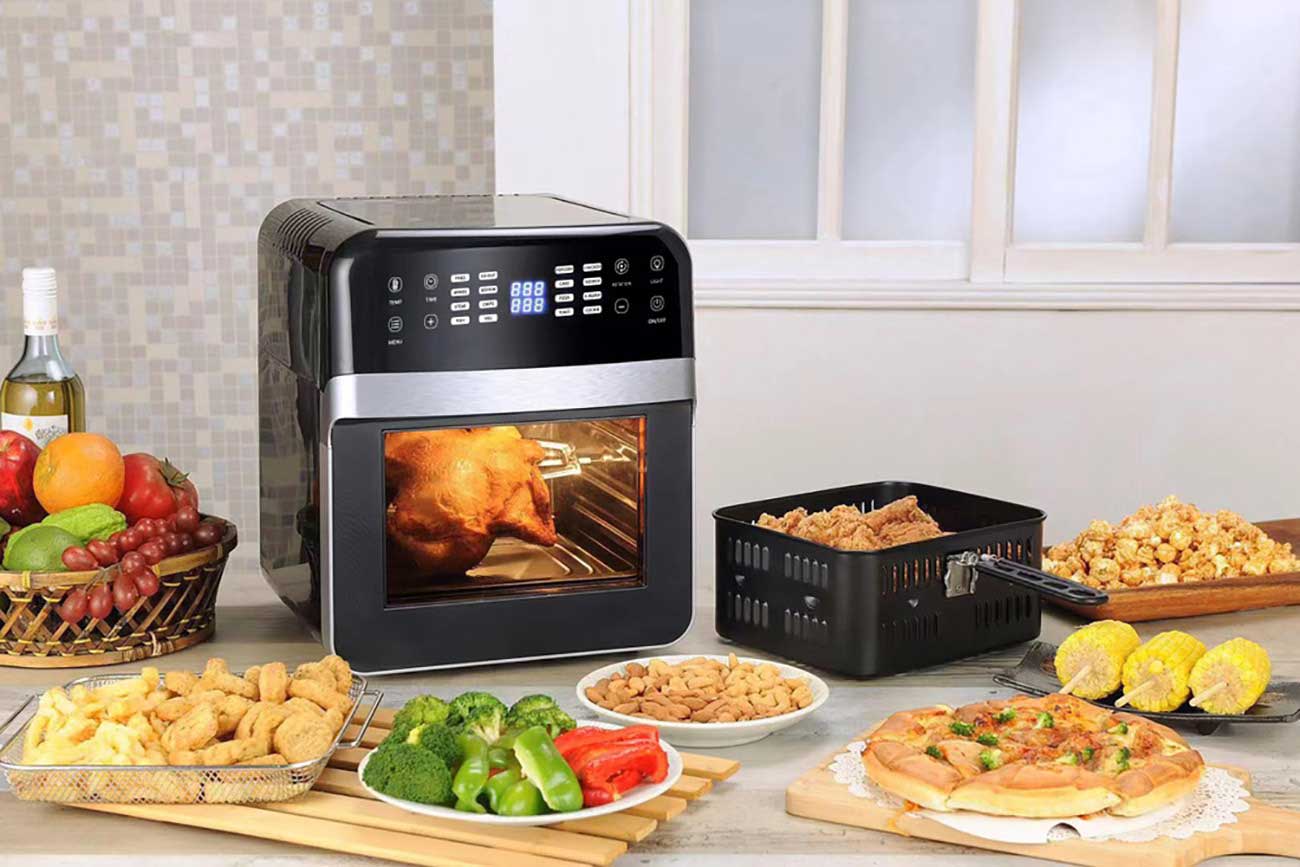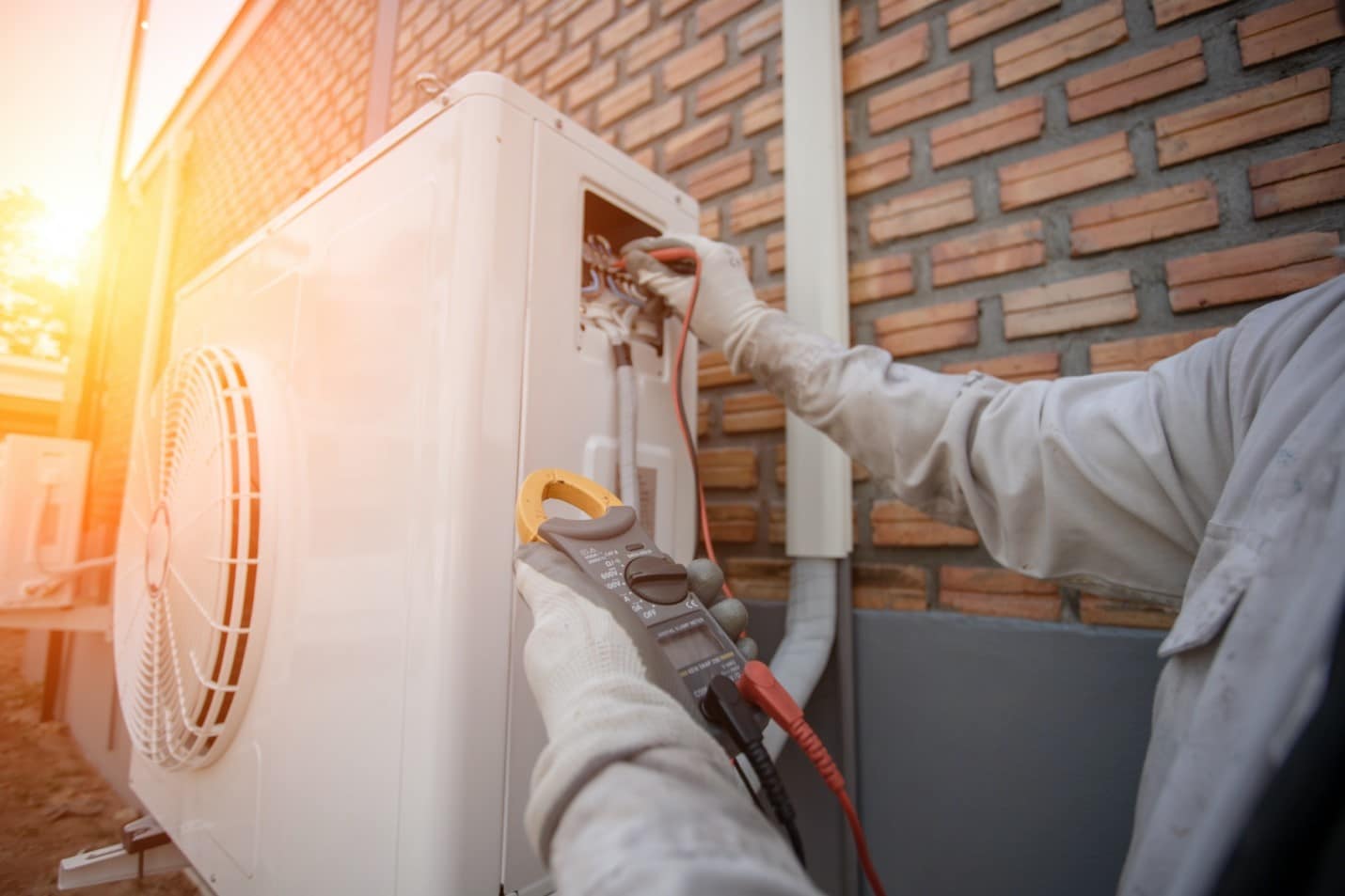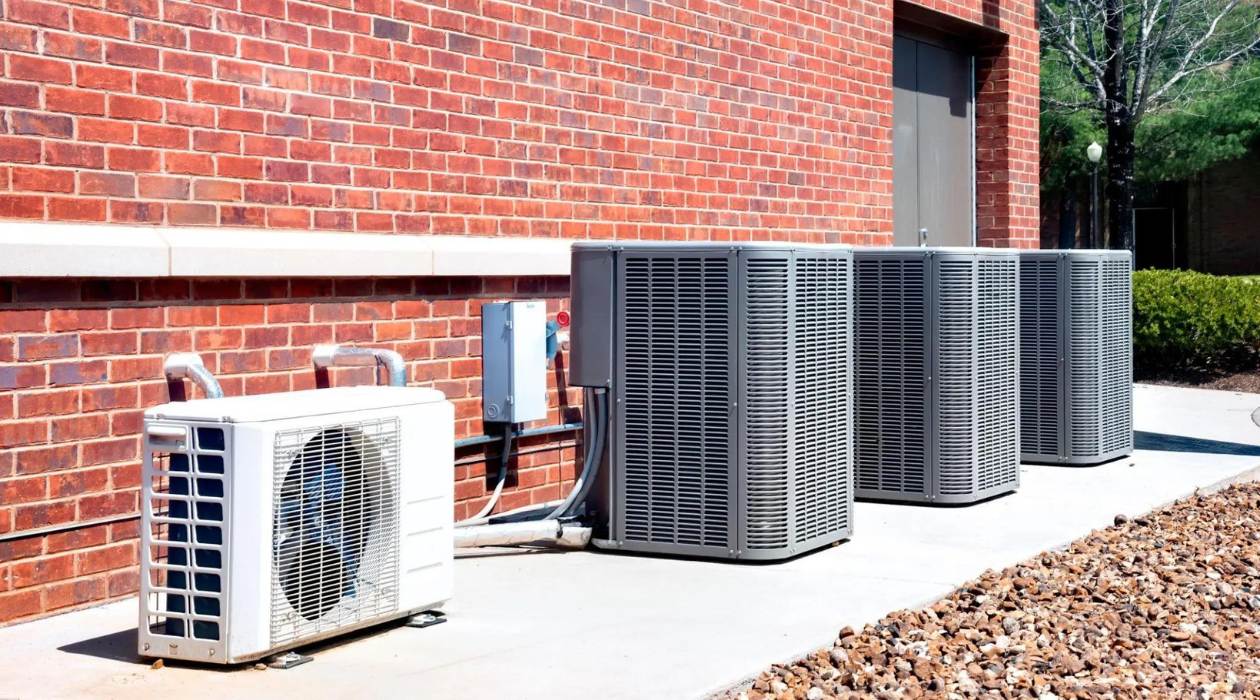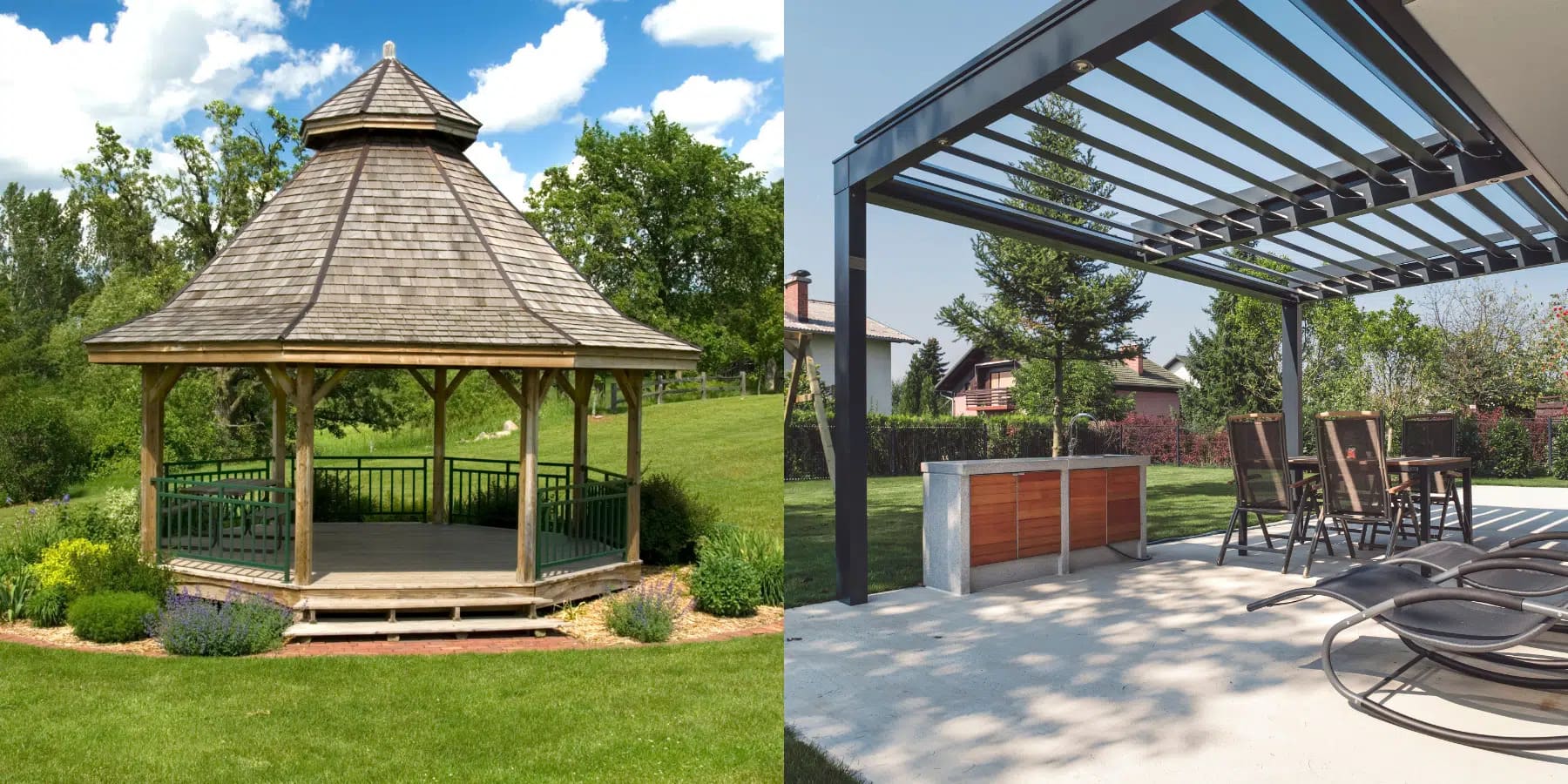Home>Articles>What Is The Difference Between An Air Fryer And A Convection Oven


Articles
What Is The Difference Between An Air Fryer And A Convection Oven
Modified: January 19, 2024
Discover the key distinctions between air fryers and convection ovens in this informative article. Find out which appliance best suits your cooking needs!
(Many of the links in this article redirect to a specific reviewed product. Your purchase of these products through affiliate links helps to generate commission for Storables.com, at no extra cost. Learn more)
Introduction
In the world of culinary innovations, there are always new appliances and cooking methods emerging to revolutionize the way we prepare our meals. Two popular options that have gained significant attention in recent years are the air fryer and the convection oven. While both of these appliances have the ability to cook food quickly and with less oil, there are some key differences between them that can impact your cooking experience.
In this article, we will explore the features and functions of both the air fryer and the convection oven, as well as compare their cooking methods, health impacts, energy efficiency, versatility, maintenance, and cost. By the end, you will have a clearer understanding of the differences between these two cooking appliances and be able to make an informed decision about which one is best suited for your needs.
So, let’s dive in and discover the unique qualities and advantages of both the air fryer and the convection oven!
Key Takeaways:
- Air fryers offer a space-saving, energy-efficient, and cost-effective solution for quick and crispy cooking, making them ideal for individuals or small households seeking healthier frying alternatives.
- Convection ovens provide versatility, larger cooking capacity, and advanced cooking options, making them suitable for those who prioritize comprehensive cooking features and are willing to invest in a more multifunctional appliance.
Air Fryer: Features and Functions
The air fryer is a compact kitchen appliance that has gained popularity for its ability to mimic the crispy and delicious results of deep frying, but with significantly less oil. It works by circulating hot air around the food to cook it quickly and evenly. Here are some key features and functions of an air fryer:
- Rapid air circulation: The main feature of an air fryer is its powerful fan that circulates hot air around the food. This ensures even distribution of heat, resulting in crispy and evenly cooked meals.
- Convection cooking technology: Air fryers use convection cooking technology, which means they have a heating element and a fan that helps distribute heat evenly throughout the cooking chamber.
- Adjustable temperature control: Most air fryers offer a range of temperature options, allowing you to set the desired temperature for different types of food.
- Timer settings: Air fryers come with built-in timers that allow you to set the cooking time. Once the time is up, the appliance will automatically shut off, preventing overcooking.
- Non-stick cooking basket: Air fryers usually come with a non-stick cooking basket that allows you to cook food without the need for excessive oil. The basket is removable for easy cleaning.
In addition to these features, many air fryers also offer pre-programmed cooking settings for popular dishes like fries, chicken, or fish. This makes it easier for users to achieve optimal cooking results without having to manually adjust the temperature and cooking time.
The compact size of air fryers makes them ideal for small kitchens or for those who are looking for a space-saving appliance. They are also relatively easy to use, making them a convenient option for individuals who want a quick and healthy cooking solution.
Now that we have explored the features and functions of an air fryer, let’s move on to understanding the features and functions of a convection oven.
Convection Oven: Features and Functions
A convection oven is a versatile kitchen appliance that uses a fan and exhaust system to circulate hot air evenly throughout the cooking chamber. It offers a wide range of features and functions that make it a popular choice for home cooking. Let’s explore some of the key features and functions of a convection oven:
- Even heating: The main feature of a convection oven is its ability to evenly distribute heat throughout the cooking chamber. This ensures that food is cooked consistently and avoids hot spots.
- Multiple cooking modes: Convection ovens often come with various cooking modes, such as bake, broil, roast, and toast. This allows users to choose the appropriate setting based on the type of dish they’re preparing.
- Temperature accuracy: Most convection ovens have precise temperature controls, allowing users to set the desired temperature with accuracy.
- Fast preheating: Convection ovens typically have a preheat feature that speeds up the preheating time compared to conventional ovens.
- Multiple racks and cooking zones: Many convection ovens come with multiple racks and cooking zones, allowing you to cook multiple dishes simultaneously at different temperatures.
- Food probe: Some convection ovens are equipped with a food probe feature that allows you to monitor the internal temperature of the food while it’s cooking.
- Self-cleaning options: Certain convection ovens offer self-cleaning features, making it easier to maintain and clean the appliance.
Convection ovens are larger than air fryers, making them suitable for those who cook for larger families or regularly host gatherings. They offer a wide cooking capacity and can accommodate larger dishes or multiple trays of food at once.
With their versatile cooking modes and advanced features, convection ovens are not just limited to baking or roasting. They can also be used for grilling, broiling, and even dehydrating, providing greater flexibility in the kitchen.
Now that we have explored the features and functions of both the air fryer and the convection oven, let’s compare their cooking methods in the next section.
Cooking Method: Air Fryer vs Convection Oven
When it comes to cooking, both the air fryer and the convection oven utilize the power of hot air circulation. However, there are some differences in their cooking methods that can influence the texture and taste of the food. Let’s take a closer look at the cooking methods of air fryers and convection ovens:
Air Fryer: Air fryers use a rapid air circulation technique to cook food. The hot air generated by the heating element is circulated around the food by a powerful fan. This circulating hot air rapidly heats the outer layers of the food, creating a crispy and golden-brown exterior. The result is similar to deep-frying but without the excessive use of oil. Air fryers are particularly suitable for cooking frozen foods or dishes that need a quick cooking time.
Convection Oven: Convection ovens also utilize hot air circulation but in a slightly different way. The convection feature in an oven works by using a fan to distribute the heated air inside the oven cavity. This constant flow of hot air cooks the food evenly and efficiently. Convection ovens are known for their ability to roast and bake foods, offering a wider range of cooking options compared to air fryers. They are ideal for dishes that require longer cooking times or for baking delicate items like pastries and cakes.
It’s worth noting that while both appliances provide crispy and evenly cooked results, the texture and taste of the food may differ slightly. Air fryers tend to produce a drier exterior compared to a convection oven. However, this can be advantageous when you want to achieve a crispy texture without excess oil. On the other hand, the moist and even cooking environment of a convection oven can lead to a slightly different texture, especially when it comes to baking.
Ultimately, the choice between an air fryer and a convection oven for cooking method will depend on your specific cooking preferences and the types of dishes you commonly prepare. If you prefer quick cooking times and crispy results, an air fryer may be the way to go. However, if you value versatility and the ability to bake, roast, and grill, a convection oven might be the better choice.
Next, we will evaluate the health impact of using an air fryer versus a convection oven to help you make an informed decision about their health benefits.
Health Impact: Air Fryer vs Convection Oven
When it comes to health considerations, both the air fryer and the convection oven offer advantages over traditional deep-frying methods. Here’s a comparison of the health impact of using an air fryer versus a convection oven:
Air Fryer: One of the key benefits of an air fryer is its ability to provide crispy and flavorful results with significantly less oil compared to deep frying. It requires only a fraction of the oil that traditional frying methods typically use. This means you can enjoy your favorite fried foods with less saturated fat and calories. Air frying also reduces the formation of harmful compounds like acrylamide that can occur during high-temperature cooking. However, it’s important to note that some studies suggest that air frying may still produce small amounts of potentially harmful compounds, albeit at lower levels than deep frying.
Convection Oven: While convection ovens do not offer the same level of oil reduction as air fryers, they are still a healthier alternative to deep frying. By utilizing hot air circulation and even cooking, convection ovens can achieve a crispy texture without excessive oil. This can lead to reduced calorie and fat intake compared to deep frying methods. Additionally, convection ovens provide a healthier cooking environment for foods that are typically baked or roasted, as these cooking methods require less oil overall.
Both the air fryer and convection oven allow you to enjoy the taste and texture of fried foods with less guilt. However, it’s crucial to remember that the healthiness of your meals ultimately depends on the ingredients and cooking techniques you choose. Opting for lean proteins, whole grains, and a variety of vegetables, and limiting the use of processed ingredients or excessive amounts of oil, will contribute to a more healthful cooking outcome regardless of the appliance you use.
Considering the health impact of both appliances is essential when making a decision, but it’s equally important to note that moderation and a well-balanced diet are key for overall health and well-being.
Next, let’s explore the energy efficiency aspect of using an air fryer versus a convection oven.
When using an air fryer, it is important to shake the basket periodically to ensure even cooking. This helps to ensure that all sides of the food are exposed to the circulating hot air, resulting in a crispy and evenly cooked dish.
Read more: How Is Air Fryer Different Than Oven
Energy Efficiency: Air Fryer vs Convection Oven
When comparing the energy efficiency of an air fryer and a convection oven, there are several factors to consider. Let’s examine how these appliances fare in terms of energy usage and efficiency:
Air Fryer: Air fryers are generally more energy-efficient than traditional ovens and even convection ovens. They are designed to heat up quickly due to their relatively small size, which means they require less energy and time to reach the desired cooking temperature. Additionally, since air fryers utilize the circulating hot air method, the cooking time is typically shorter compared to other cooking appliances. This shorter cooking time further contributes to energy efficiency. Overall, air fryers are an energy-saving option for quick and small cooking tasks, making them more suitable for individuals or small households.
Convection Oven: Convection ovens are larger and more powerful appliances compared to air fryers. While they offer more cooking capacity and versatility, they can also consume more energy. However, convection ovens are still more energy-efficient than traditional ovens because they use the fan and the hot air circulation to cook food more evenly and at a faster rate. The convection feature helps to reduce cooking time, which, in turn, reduces the overall energy consumption. For those who regularly cook larger meals or need the flexibility of multiple cooking zones, convection ovens can still be a relatively energy-efficient choice.
To maximize the energy efficiency of both appliances, it is essential to follow a few tips. It’s recommended to preheat the air fryer or convection oven only when necessary and to cook meals in batches to make the most of the energy used. Additionally, using appropriate cookware that allows for optimal air circulation can help reduce cooking time and energy consumption.
While air fryers take the lead in energy efficiency, the exact energy consumption will depend on factors such as the specific model, duration of usage, and the type of food being cooked. It’s always a good idea to check the energy rating and compare the power consumption of different models to make an informed decision.
Now that we have discussed the energy efficiency of these appliances, let’s explore their versatility and cooking capacity next.
Versatility and Cooking Capacity: Air Fryer vs Convection Oven
When it comes to versatility and cooking capacity, the air fryer and the convection oven offer different advantages. Let’s delve into the versatility and cooking capacity of these appliances:
Air Fryer: While air fryers excel at producing crispy, fried-like results, their versatility is somewhat limited compared to convection ovens. Air fryers are primarily designed for air frying and can achieve remarkable results with minimal oil. They are perfect for cooking frozen foods, fries, chicken wings, and other crispy favorites. Additionally, some air fryer models may offer baking, grilling, or roasting functions, allowing for a broader range of cooking possibilities. However, due to their compact size, air fryers have a smaller cooking capacity. Depending on the model, they may not be suitable for cooking large quantities or accommodating bigger dishes.
Convection Oven: Convection ovens are known for their versatility and cooking capacity. They offer a wide range of cooking modes such as bake, broil, roast, toast, and even dehydrate. Convection ovens provide a larger cooking space, allowing for multiple racks and the capacity to cook larger quantities of food. This makes them ideal for those who need the flexibility to cook for bigger families or entertain guests. The multiple cooking zones also enable simultaneous cooking of various dishes at different temperatures. Whether you’re roasting a turkey, baking bread, or grilling a steak, a convection oven can handle a wide array of cooking tasks.
In terms of versatility, the convection oven has the upper hand due to the numerous cooking modes and larger cooking capacity. However, if you primarily cook smaller meals or enjoy the convenience of quick air frying, an air fryer can still be a valuable and versatile addition to your kitchen.
It’s important to consider your cooking needs and lifestyle when deciding between the air fryer and the convection oven. If you require more cooking options and have a larger household, a convection oven would likely suit your needs better. However, if you prefer the convenience of air frying and have limited space, an air fryer might be the more practical choice.
Now, let’s move on to discussing the maintenance and cleaning aspects of these appliances.
Maintenance and Cleaning: Air Fryer vs Convection Oven
When it comes to maintenance and cleaning, both air fryers and convection ovens require regular care to ensure optimal performance and longevity. Let’s explore the maintenance and cleaning aspects of these appliances:
Air Fryer: Air fryers are generally easier to clean compared to convection ovens due to their smaller size and removable components. Most air fryers come with a non-stick cooking basket or tray that can be easily removed and washed. Additionally, the majority of air fryer baskets and trays are dishwasher-safe, making the cleaning process even more convenient. It’s important to wipe down the exterior of the appliance regularly and clean the heating element to prevent oil and food residue buildup. Regular maintenance may also include checking the fan and vent for any blockages to ensure proper airflow.
Convection Oven: Convection ovens require slightly more effort for maintenance and cleaning due to their larger size and more complex construction. You will need to remove and clean the oven racks, baking trays, and other accessories regularly. Most convection ovens have a self-cleaning function that uses high temperatures to burn off food spills and residue, making the cleaning process easier. However, it’s important to note that self-cleaning cycles can produce intense heat and smoke, so it’s essential to follow the manufacturer’s instructions and take appropriate safety precautions. For day-to-day cleaning, wiping the interior and exterior surfaces with a mild detergent is necessary to remove any grease or food particles.
Regardless of the appliance you choose, regular maintenance and cleaning are essential to ensure optimal performance and prolong the lifespan of the appliance. It’s recommended to refer to the manufacturer’s instructions for specific cleaning guidelines and to avoid using abrasive cleaners or utensils that may damage the surfaces.
Considering the ease of maintenance and cleaning is crucial when selecting an appliance, especially if you prefer quick and hassle-free cleanup after cooking.
Now that we have discussed the maintenance and cleaning aspect, let’s move on to comparing the cost between air fryers and convection ovens.
Cost Comparison: Air Fryer vs Convection Oven
When deciding between an air fryer and a convection oven, cost is an important factor to consider. Let’s compare the cost aspects of these appliances to help you make an informed decision:
Air Fryer: Air fryers generally come at a lower price point compared to convection ovens. The cost of an air fryer can vary depending on the brand, model, and size. Compact-sized air fryer models suitable for individuals or small households are usually more affordable, while larger capacity air fryers or those with more advanced features may be higher in price. Additionally, the cost of operating an air fryer is relatively lower compared to other cooking appliances due to its smaller size and energy-efficient cooking method. Considering the initial investment and the long-term savings in oil usage, air fryers are a budget-friendly option for those who want healthier, crispy cooking results without breaking the bank.
Convection Oven: Convection ovens tend to come at a higher price point compared to air fryers. The cost of a convection oven can vary depending on the brand, size, cooking features, and additional functions. The larger cooking capacity and versatility of convection ovens contribute to their higher cost. While the initial investment may be higher, a convection oven offers more cooking options and can be a worthwhile investment for those who frequently cook for larger families or enjoy the flexibility of multi-zone cooking. However, it’s important to assess your cooking needs and consider whether the added features and capacity of a convection oven justify the higher cost.
In addition to the upfront cost, it’s important to consider the long-term maintenance costs of these appliances. Air fryers typically have fewer components to clean and replace, making them more cost-effective in terms of maintenance. Convection ovens, on the other hand, may require regular maintenance and occasional replacement of parts such as oven racks or heating elements, which can add to the overall cost over time.
Ultimately, the cost of an air fryer vs. a convection oven will depend on your budget, cooking needs, and priorities. If you’re looking for an affordable appliance that can provide healthier frying alternatives, an air fryer would be a cost-effective choice. However, if you prioritize versatility, cooking capacity, and don’t mind the higher initial investment, a convection oven may be the better option.
Now that we have reviewed the cost comparison, let’s summarize our findings in the concluding section.
Conclusion
In conclusion, both the air fryer and the convection oven offer unique features and advantages that can enhance your cooking experience. Let’s recap the key points discussed in this article to help you make an informed decision:
The air fryer is a compact and convenient appliance that excels at providing crispy and delicious results with significantly less oil. It is suitable for individuals or small households, offering quick cooking times and easy maintenance. While it may have limited cooking capacity and versatility compared to a convection oven, an air fryer is a cost-effective option that allows you to enjoy your favorite fried foods in a healthier way.
On the other hand, the convection oven offers versatility, larger cooking capacity, and a wider range of cooking modes. It is ideal for those who cook for larger families or frequently entertain guests, providing the flexibility to bake, roast, and grill a variety of dishes. Although convection ovens may require more maintenance and come at a higher cost, they offer more comprehensive and advanced cooking options.
When it comes to health impact, both appliances provide healthier alternatives to traditional frying methods. The air fryer offers a lower-fat option, while the convection oven reduces the need for excessive oil, resulting in lower calorie intake. The energy efficiency of air fryers makes them a greener choice, while convection ovens strike a balance between power and versatility.
Consider your specific cooking needs, preferences, and budget when making a decision. If you prioritize quick and crispy results, space-saving convenience, and a lower initial cost, an air fryer might be the perfect fit for you. However, if you value versatility, cooking capacity, and are willing to invest in a more comprehensive cooking appliance, a convection oven would be a suitable choice.
In the end, whether you choose an air fryer or a convection oven, both appliances offer unique benefits that can help you create delicious meals with ease. It’s important to consider your personal cooking style, space limitations, and desired cooking outcomes to determine which appliance will best meet your needs.
We hope this comprehensive comparison between the air fryer and the convection oven has provided you with the necessary insights to make an informed decision. Happy cooking!
Frequently Asked Questions about What Is The Difference Between An Air Fryer And A Convection Oven
Was this page helpful?
At Storables.com, we guarantee accurate and reliable information. Our content, validated by Expert Board Contributors, is crafted following stringent Editorial Policies. We're committed to providing you with well-researched, expert-backed insights for all your informational needs.














0 thoughts on “What Is The Difference Between An Air Fryer And A Convection Oven”